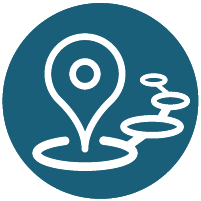Hidden Science: Helping Students Uncover the Science in Everyday Careers
,
HBGCC - Posters, Table 20
Session description
Outline
As a poster session, the presentation will cycle through the following topics over about 10-15 minutes. I will have visuals and QR codes to link to resources.
1. Hidden Science Project overview
Group video research projects created using Flip or Padlet
b) Connects students with experts in a variety of careers selected by students
2. Problem/Solution - Why Hidden Science?
a) Show students that experts of all genders, races, and ages use science regardless of their careers
b) Highlight the “hidden science” in careers that students do not associate with being scientists
3. Explanation of project scheduling
Share suggested timeline
b) Discuss possible modifications
4. Overview of student videos
a) Types of jobs for that career
Summary of career
Questions for an expert
Hidden science of that career
Thank you reflection
5. Using AI to Research
Year two, students created infographics about the careers
To allow more time to work on the expert videos, students used AI to research the careers
6. Expert Videos
a) Recruiting career experts
b) Value of expert videos
c) Logistics
7. Slideshow of culminating products.
8. Action Research Findings
a) Exit ticket data
b) Analysis of “Thank You Reflection” videos
9. Resources for replicating the project and link to electronic resources
a) A QR Code will link to a folder containing the presentation, photos, videos, and other resource
b) Information post cards will be shared containing presenter content information and resource folder link
Supporting research
Shin, D. D., Lee, M., Ha, J. E., Park, J. H., Ahn, H. S., Son, E., Chung, Y., & Bong, M. (2019). Science for all: Boosting the science motivation of elementary school students with utility value intervention. Learning and Instruction, 60, 104–116. https://doi.org/10.1016/j.learninstruc.2018.12.003
Peterson, B. (2020). Building STEM Career Interest through Curriculum Treatments. Journal of STEM Education: Innovations and Research, 21(1), 64–73.
Jones, L. K., & Hite, R. L. (2021). A global comparison of the circumscription and compromise theory of career development in science career aspirations. School Science & Mathematics, 121(7), 381–394. https://doi.org/10.1111/ssm.12492
Master, A. (2021). Gender Stereotypes Influence Children’s STEM Motivation. In Grantee Sub
Rhodes, Leslie, S.-J., Yee, K. M., & Saunders, K. (2019). Subtle Linguistic Cues Increase Girls’ Engagement in Science. Psychological Science, 30(3), 455–466.mission. Grantee Submission.
Presenters

Session specifications
Topic:
Grade level:
Audience:
Attendee devices:
Subject area:
ISTE Standards:
Facilitator
- Model and nurture creativity and creative expression to communicate ideas, knowledge or connections.
Creative Communicator
- Use digital tools to visually communicate complex ideas to others.
- Use collaborative technologies to work with others, including peers, experts or community members, to examine issues and problems from multiple viewpoints.
TLPs:
| Related exhibitors: | Canva Education |

 Back
Back Trips and Tours
Trips and Tours